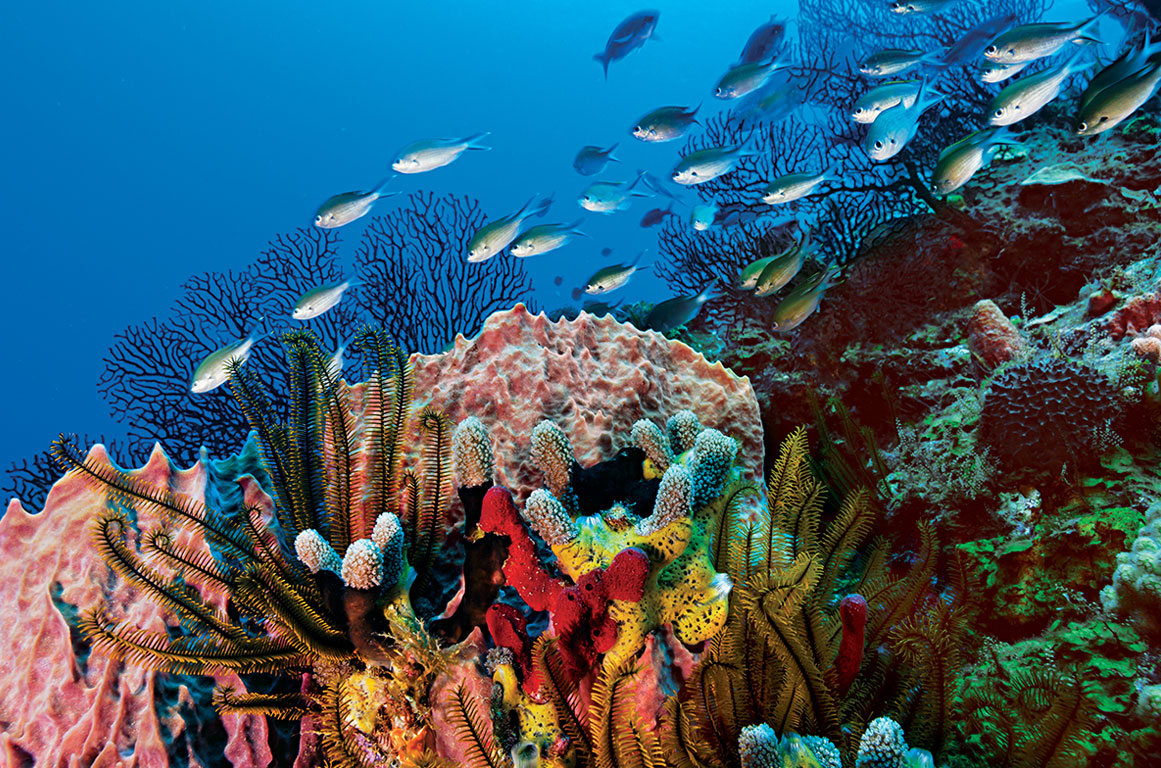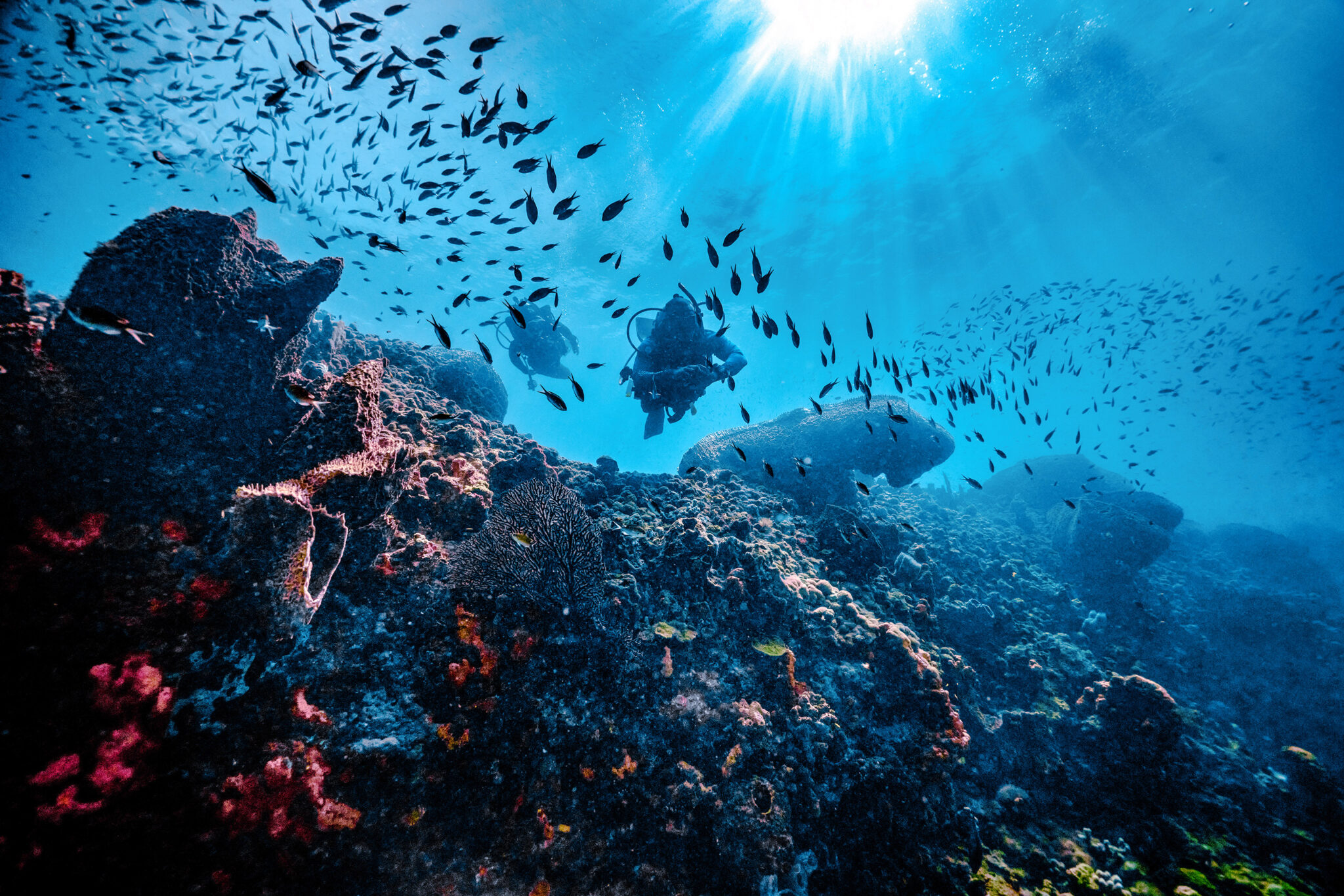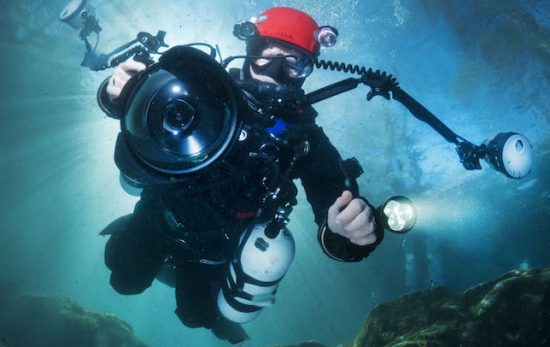Saint Lucia is a favorite Caribbean destination for many travelers. Its lush landscapes, iconic Pitons reaching over 2,600 feet (790 meters) high, gorgeous beaches, and many historic plantations give visitors plenty to see.
Below the surface, the topography is equally impressive, with dramatic wall dives, swift currents, and shallow shelves housing everything from frogfish to seahorses.

Divers credit the swift currents for the gin-clear visibility. They reveal schools of fish sprinkled over healthy reefs and enough macro life to keep any underwater photographer content. Balmy water temperatures range from 78˚F (26ºC) in the winter to 84˚F (29ºC) in the summer. This means you’ll usually need nothing more than a 3mm shortie to stay warm. And with a whopping 24 marine reserves scattered around the island, there’s no shortage of diving available.
With such impressive dive conditions, we turned to PADI Pro Scott Kerr at Anse Chastanet for his take on the best dive sites in Saint Lucia.
Here are five must-dive sites in Saint Lucia that belong in your logbook.

1. Anse Chastanet
Opposite the resort that gives the site its name, the close proximity to the shore and shallow depths makes Anse Chastanet a shoo-in for shore diving. The reef itself is a mecca for macro. What’s more, it’s also home to St. Lucia’s elusive Loch Ness Monster – a slithery, long, worm-like creature known as “The Thing” and rumored to make an appearance on night dives.
2. Fairyland
Fairyland is a Divemaster favorite. The strong currents keep its abundance of corals and sponges vibrant in color. This also makes it an excellent site for underwater photography. The wall is great for drift diving, while the shallows are prime spots for turtle encounters.

3. Keyhole Pinnacles
Much like an underwater version of the Pitons, this site is famous for the four dramatic seamounts that rise from the depths, almost up to the surface. The site offers stunning views of black and orange gorgonian sea fans, colorful corals, sleepy grouper, and color-changing filefish. There’s even a chance to spot seahorses, frogfish, and other macro life here.
4. The Wreck of the Lesleen M
If you’re a fan of wreck diving, head to the Lesleen M. Located in Anse Cochon Bay, this 165-foot (50-meter) freighter was purposely sunk in 1986 to make an artificial reef. It resides in waters ranging from 40 to 65 feet (12 to 20 meters) deep, making it accessible to all divers. Easy access to the hold and engine room makes for great photo ops. The wreck also provides shelter to a nursery of French angelfish, moray eels, and plenty of other reef fish.

5. Superman’s Flight
The cliff above this dive site, at the base of Petit Piton, was used in a scene in the film Superman II, giving the dive site its name. However, they could just as well have named it after the moderate current that flows along this sloping wall, making it a favorite for drift divers. Superman fans can tap into their inner hero. The crystal-clear currents will take you soaring on a ride past soft corals, massive sponges, schools of grunts, and colorful parrotfish.
Are You Ready To Add Saint Lucia to Your Logbook?
The best time to visit Saint Lucia is November to May to avoid the rainy season and potential storms. What’s more, with plenty of US airports and European capitals offering direct flights to Hewanorra International Airport, there’s never been a better time to come. So grab your tanks and dive right into your next Caribbean adventure.




